(Photo by Dustin Humes on Unsplash)
Chances are you’ve heard talk about adding clover to grass to create a mixed lawn or swapping your grass entirely for clover. Chances are you’re also curious about why this is becoming a trend or how to do it yourself.
Clover is finding its way back into lawns because it is low-maintenance and needs few inputs like water, fertilizer, and herbicides. People are drawn to cutting down on lawn care while having a more environmentally conscious yard.
If you’re interested in learning more about growing clover and how to add it to your lawn, you’ve come to the right place! Let’s talk about why it’s gaining popularity and the important things you need to know for growing a clover lawn.
Why is Clover Gaining Popularity in Lawns
Adding clover to a traditional grass lawn isn’t a new concept, although it fell out of popularity for many decades and is now making a comeback with homeowners.
In the early to mid-twentieth century, clover was found in most lawns and was even included in most lawn seed mixes you could purchase. Homeowners liked it because, as a legume, it fixed nitrogen, which naturally enriched the soil and improved the overall lawn growth.
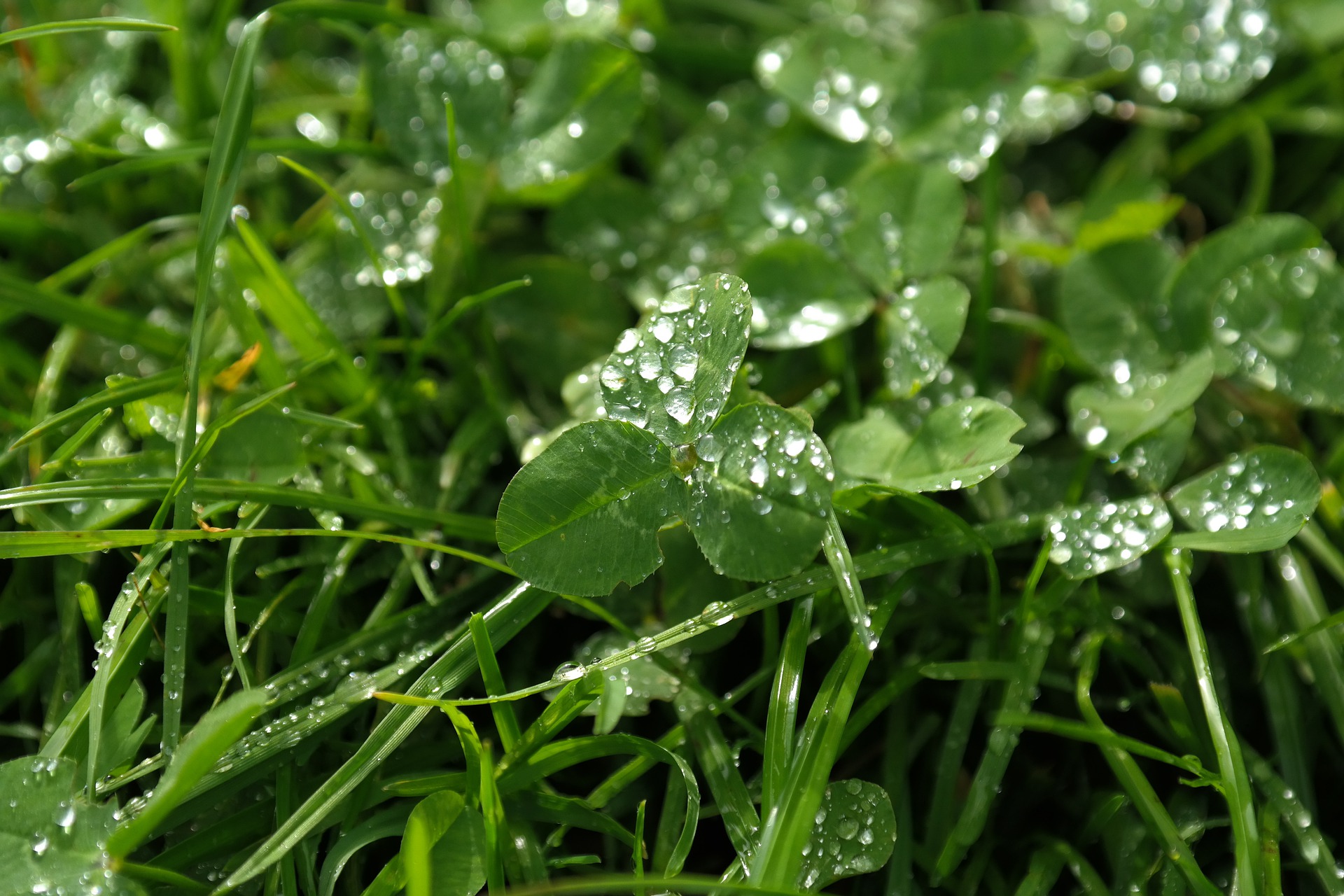
During the 1950s, this all changed dramatically, coinciding with the introduction of synthetic herbicides. The trend shifted from mixed lawns to pristine, well-kept lawns free of dandelions and other weeds—unfortunately, 2,4-D herbicides also killed off clover. This lawn care mentality and pursuit of perfect lawns has stayed strong since then, with homeowners using an astonishing amount of herbicides.
As people become more aware of their environmental footprint, a shift is happening again towards more low-maintenance, eco-friendly lawn care practices. Homeowners are looking for ways to reduce their water consumption and agrochemical use. Because of this, clover is finding its way back into lawns.
15 Benefits of Clover in Your Lawn
#1 - Needs Less Water. Clover’s deep root system can access more water in the soil profile, improving drought tolerance and lessening watering needs.
#2 - No Mowing. Clover seed for lawns stays shorter than typical lawn grasses. It doesn’t need to be mowed unless you want to cut it to remove flowers.
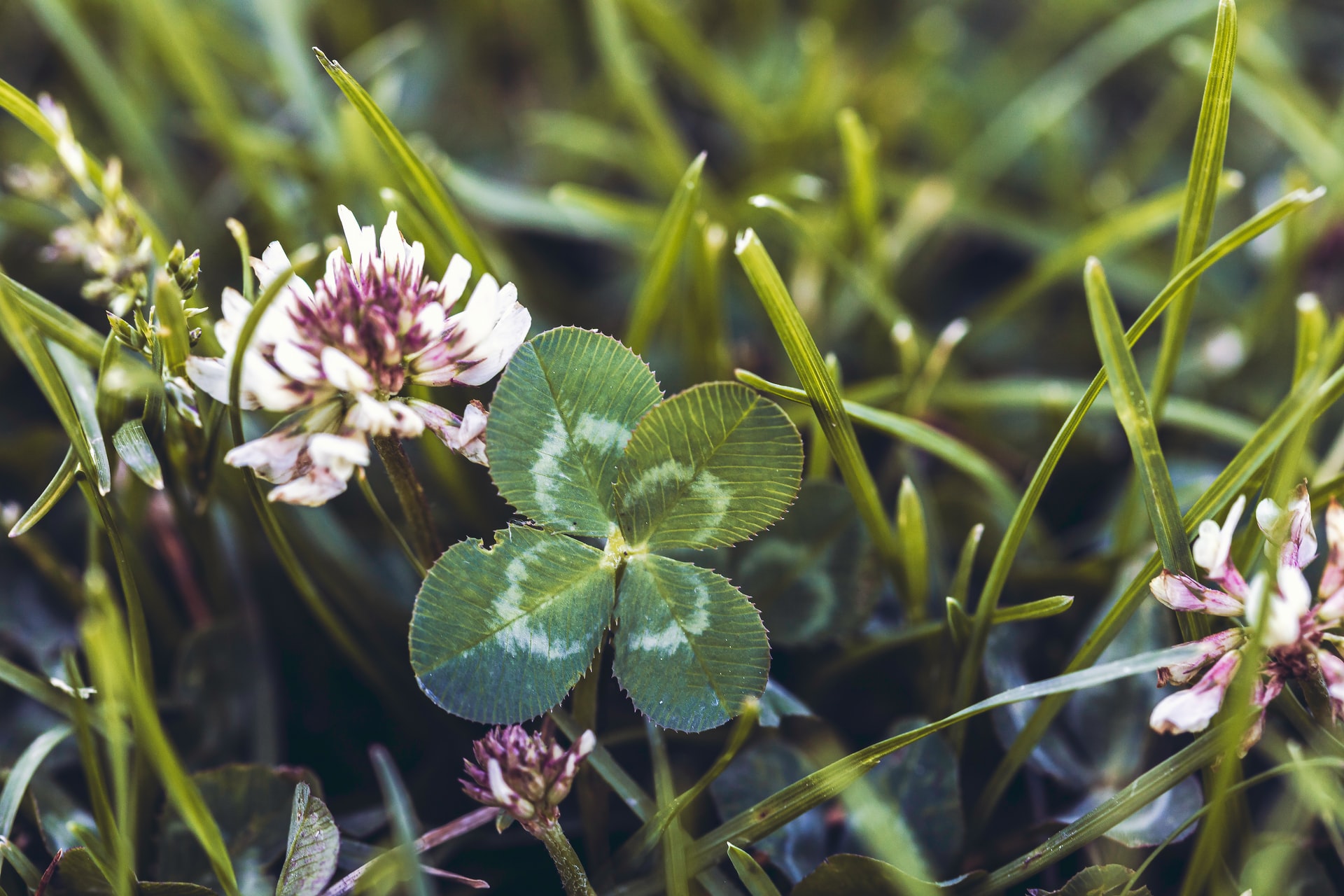 (Photo by Elijah Mears on Unsplash)
(Photo by Elijah Mears on Unsplash)
#3 - Grows in Poor Soil. Clover grows in sandy, rocky, or infertile soils most because of its ability to supply nitrogen for itself.
#4 - Handles Heat. Clover doesn’t mind the summer heat and stays green all season long, unlike some grasses that go dormant when it’s hot.
#5 - Handles Shade. Clover thrives in partly shaded spots that typically don’t get enough sun to grow grass.
#6 - Winter hardy. Clover stays green year-round in warmer climates, and some species overwinter as perennials, withstanding temperatures down to -35°F.
#7 - Inexpensive. Clover can be cheaper than turfgrass seeds and costs less to maintain throughout the growing season.
#8 - No Nitrogen Fertilizer. Clover works with beneficial soil bacteria to make plant-usable nitrogen from the atmosphere, so you don’t need to apply additional nitrogen fertilizer.
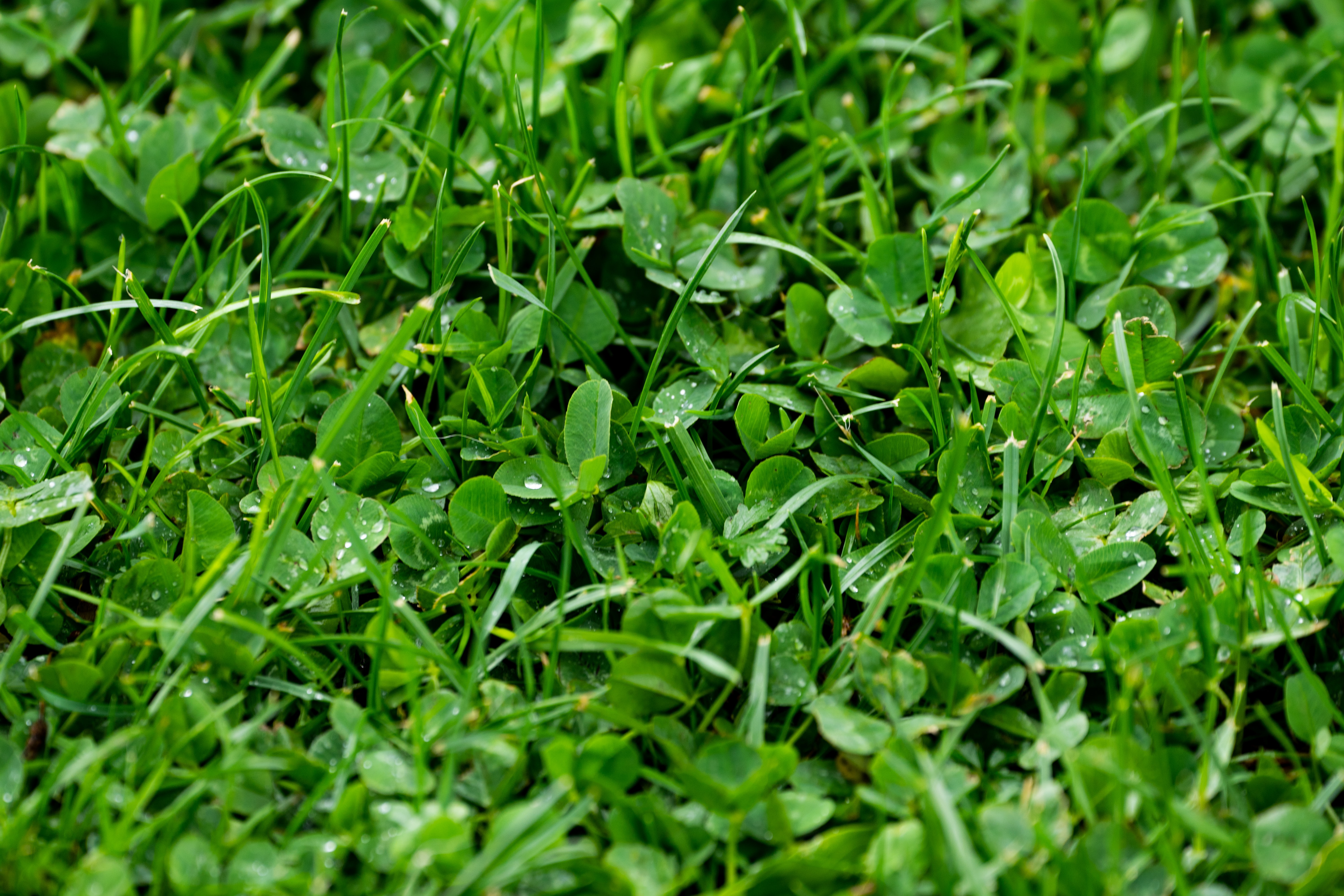 (Photo by Peter . on Unsplash)
(Photo by Peter . on Unsplash)
#9 - No Weeds. Clover is vigorous and out-competes weeds for resources, slowing weed growth. It also prevents unwanted weed seeds from germinating.
#10 - No Herbicides. Clover helps prevent weeds, reducing the need for herbicides, but it is also susceptible to broadleaf herbicides. Not using herbicides reduces your chemical exposure and potential environmental impacts.
#11 - Reduces Soil Compaction. Clover’s expansive root system breaks up soil compaction as it grows through the soil, reducing the need for regular aeration.
#12 - Dog Friendly. Clover won’t turn yellow like turfgrass if you have a pet in your yard.
#13 - Attracts Pollinators. Clover flowers attract honey bees and other beneficial pollinators, helping your garden, fruit trees, and ornamental plants.
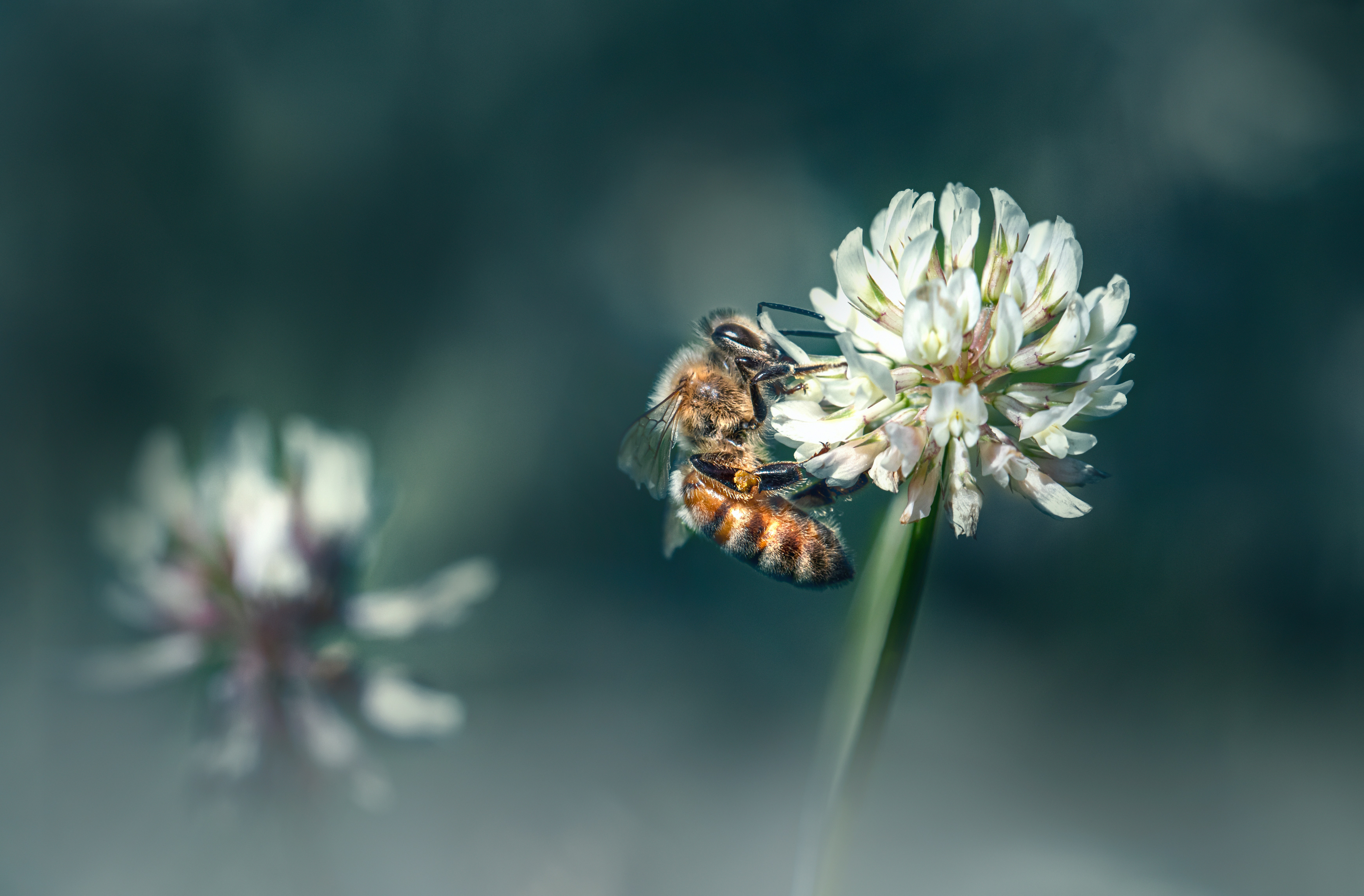 (Photo by Erik Karits on Unsplash )
(Photo by Erik Karits on Unsplash )
#14 - Discourages Pests. Clover is known for having few problems with insect pests. Its high palatability keeps bunnies and other small rodents from snacking on your flowers.
#15 - Stays Green Longer. Clover is tolerant of a wider temperature range than turf, so it stays green during the summer heat and keeps its color later in the fall. In some areas, it stays green all winter long if the temperatures are mild.
How Can You Add Clover to Your Lawn?
There are two different ways to incorporate clover into your lawn.
- You can mix clover into your current lawn to create a mixture of turfgrass and clover.
- You can wipe out your existing lawn and seed straight clover for a 100% clover lawn.
Is it Better to Have a Turf and Clover Mixture or a Straight Clover Lawn?
Without a doubt, a 100% clover lawn is beautiful. But there are pros and cons to seeding a lawn this way. When deciding how to approach adding clover to your yard, it’s essential to consider what you want in your yard, the cost, and your climate before you plant a Clover lawn.
 (Photo by Erik Karits on Unsplash)
(Photo by Erik Karits on Unsplash)
Seeding a full-blown microclover stand can be pricey when ten pounds of seed costs about $450. Depending on seeding rates, this costs between $450 and $1,125 to seed 5,000 square feet. The same size yard will run about $150 for a premium blend of grass and micro clover lawn seed.
Second, clover lawns do have drawbacks in colder climates. In areas with freezing temperatures, clover grows as a perennial, dying back to the ground in the fall. While this protects the foliage from winter temperatures, you can have a bare, muddy yard in the spring. Because of this, it isn’t generally recommended to seed Dutch white or microclover as a monoculture in Northern climates.
Mixing turf and clover ensures you have some ground cover in the spring, even if it takes time to green. For Southern homeowners, winter dormancy isn’t a concern, so you see entire clover lawns more often.
 (Photo by Julietta Watson on Unsplash)
(Photo by Julietta Watson on Unsplash)
Best Types of Clover for Your Lawn
With over three hundred species of clover in the world, one would think you have plenty of options when selecting one for your lawn. Within those different types, Dutch white clover (Trifolium repens) and microclover (Trifolium repens var. ‘Pipolina’ or ‘Pirouette,’ for example) are the two most commonly used in lawns.
Dutch White Clover
Also known as white Dutch clover, or simply Dutch clover, this type is prevalent in the United States. Dutch white is a low-growing variety of white clover, related to other types (large white or Ladino clover and intermediate white clovers) typically grown for use as forages.
At one time, Dutch white clover was commonly grown in lawns and often found in basic turf grass seed mixtures. In the 1950s, however, it fell out of popularity when broadleaf herbicides gained traction, and homeowners wanted weed-free, strictly turfgrass lawns.
It grows 4-8 inches tall.
Microclover
Microclover is another type of white clover. It’s a newly-developed, patented cultivar that is gaining popularity because of its small size and improved characteristics. It is the smallest type of white clover worldwide.
Microclover maxes out at 4-6 inches tall, has smaller leaves than dutch white, tolerates higher foot traffic, and can be mowed shorter. It produces 90% fewer flowers, attracting fewer bees to your yard.
One of the most appealing traits is that microclover mixes with most turfgrass species better than white clover, including Dutch white.
What Turfgrasses Blend Well with Clovers?
You have different turf options if you want to blend clover into an existing yard or create a custom mix of clover and grass.
- Fescues—fine, tall, and dwarf—are highly recommended for blending with clovers. Deer Creek Seed’s Low Grow Fescue Turf Mix is ideal for mixing with clover as it has a low growth habit and only needs mowed a couple of times a year.
- Kentucky bluegrass and perennial ryegrass also blend well with clover. To see a mix of great color and texture, opt for a blend like 50/50 Kentucky Bluegrass/Perennial Ryegrass Turf Mix.
You can either mix grass seed with clover yourself or purchase pre-mixed blends. A pre-mixed blend is convenient and relatively cost-efficient, especially if working with a small area.
Deer Creek Seed sells Eco White Clover Turf Mix, a blend of Kentucky bluegrass, perennial ryegrass, annual ryegrass, creeping red fescue, and dutch white clover.
When Should You Seed a Clover Lawn?
Dutch white clover and microclover are best seeded in early spring when the chance of frost has passed, and air temperatures are 50-60°F. The exact timing will vary depending on your growing zone, but for most climates, you can plan to sow clover seed from mid-March to mid-April. If you’re interested, you can also frost seed clover ahead of time.
Similar to cool-season grasses, you’ll see some recommendations to plant clovers in late summer or early fall. We recommend you avoid late-season planting if possible and wait until spring. Planting late in the year results in new growth going into the winter and increases the likelihood of winterkill. Spring planting gives clover time to establish itself before the cold weather.
Instructions for Seeding a New Clover Lawn
Seeding a new lawn is more labor-intensive than overseeding clover into existing turf. Unless you’re working with new construction and bare topsoil, you’ll need to get rid of your current lawn to start with a clean slate.
Preparing Your Yard for Seeding
- Test the soil pH. Clovers like slightly acidic conditions, with soil pH values between 6 and 7. If necessary, raise the pH with lime or lower it with soil-acidifying products.
- Clean up any twigs, trash, and stones.
- Get rid of the existing grass. You can do this with a sod cutter, spray everything with a non-selective herbicide, or cover the grass with black plastic or a tarp to kill it.
- Once the grass is killed, use a rototiller or garden rake—depending on the seedbed size—to loosen the top couple of inches of soil.
- Level out any low or high spots.
- Let the yard sit for a couple of weeks to encourage latent weed growth. Water the soil regularly to encourage weed seeds to germinate.
- Remove any remaining weeds, making sure to get the entire root system.
Sowing Your Clover Seed
- Mix the clover seeds with sand or sawdust to improve coverage when spreading.
- Broadcast seeds across the seedbed working in a crosshatch pattern for even coverage.
- Gently rake small areas with an overturned garden rake or use a lawn roller to create good contact between the seeds and soil.
- Keep the soil and seeds moist. Water the area immediately after planting and two to three times daily for the first two weeks.
Overseeding Clover Into Your Grass Lawn
When you overseed your current grass lawn with clover, you don’t need to get rid of the yard and start with bare soil. Instead, you must prep the lawn to ensure the seed makes good soil contact for improved germination.
- Mow your grass 1 to 1.5” tall.
- Dethatch the entire area with a power rake.
- For small patches, use a garden rake to loosen the soil.
- Following the planting steps listed above.
Seeding Rates for Dutch White Clover and Microclover
Since clover plants spread easier across the lawn than turfgrasses, you’ll sow seeds at a lower rate. In general, the following seeding rates are recommended.
Dutch White Clover Seeding Rates
- Sow Dutch white clover at ¼ to ½ pounds of seed per 1000 square feet of lawn.
- Sow seed at twice that rate in partial shade locations to improve germination.
- When mixing Dutch white with turfgrass, mix clover, so it is no more than 5 to 10% of the total seed mixture.
Micro-Clover Seeding Rates
- To plant an entire microclover lawn, sow seed at a rate of 2 to 5 pounds per 1000 square feet of lawn.
- To overseed turf with microclover, sow at a rate of ¼ to ½ pounds of seed per 1000 square feet of lawn.
- To start a new mixed clover and turf lawn, follow the seeding rates for your chosen turf type. Keep the clover percentage at 3-5% of the total blend.
Do I Need Inoculated Clover Seed?
Legumes such as clover need specific bacteria in the soil to fix nitrogen. The plants’ roots form a mutually beneficial, symbiotic relationship with this bacteria. The rhizobia help the plant capture nitrogen from the air.
If you’ve strictly grown turfgrass in your yard before now, you’ll need to introduce this bacteria to the soil. Adding extra bacteria is often recommended even if you’ve grown clovers already.
You’ll want to purchase inoculated seed or a separate inoculant to apply during seeding.
How to Care For Your Clover Lawn
Homeowners are drawn to mixed or solid clover lawns because they are low-maintenance. Caring for one is pretty straightforward.
- Resist the temptation to water your lawn, especially if you’re growing Dutch white clover. Clover is generally drought-tolerant, and white Dutch is the most tolerant type. Early spring rains are sufficient in many places to get your clover lawn through the season.
- Don’t add any fertilizers containing nitrogen. Your lawn may still need potassium, phosphorus, and micronutrients, but adding extra nitrogen will hinder clover growth because it makes its own.
- Don’t mow your lawn if you don’t want. If you decide to mow it, it’s best to wait and let the clover flower before you cut it, then cut it 2-3” tall to knock off the flowers. Never bag lawn clippings. You want the material to break down and release nitrogen into the soil.
- Check your soil pH every few years and adjust it if the value is significantly out of range.
Final Thoughts on Clover Lawns
As you can see, many great reasons for growing a clover lawn exist. You can still have a beautiful green yard, but you’ll save time and money since you won’t regularly mow, and it needs less water and fertilizer. Clover attracts wildlife, so if you love to see a deer on your lawn this might be the right choice for you.
Whether you’re looking to grow a complete Dutch white clover lawn, or are interested in trying a mix of turfgrass and clover, look no further than Deer Creek Seed! Our selection of high-quality seeds will help you grow the perfect lawn.
Additional Resources
- Debating on whether microclover is a good fit for your lawn? Let the University of Illinois help you with their useful information on microclovers as a lawn alternative.
- For more facts on white clover, head to this factsheet by Clemson Cooperative Extension Center.
- The University of Georgia Extension has a great guide on establishing and managing white clover.
- The University of New Hampshire goes more in-depth about replacing turfgrasses with pollinator-friendly alternatives.
- Interested in learning more about seed inoculation? Check out this piece by Oregon State University.




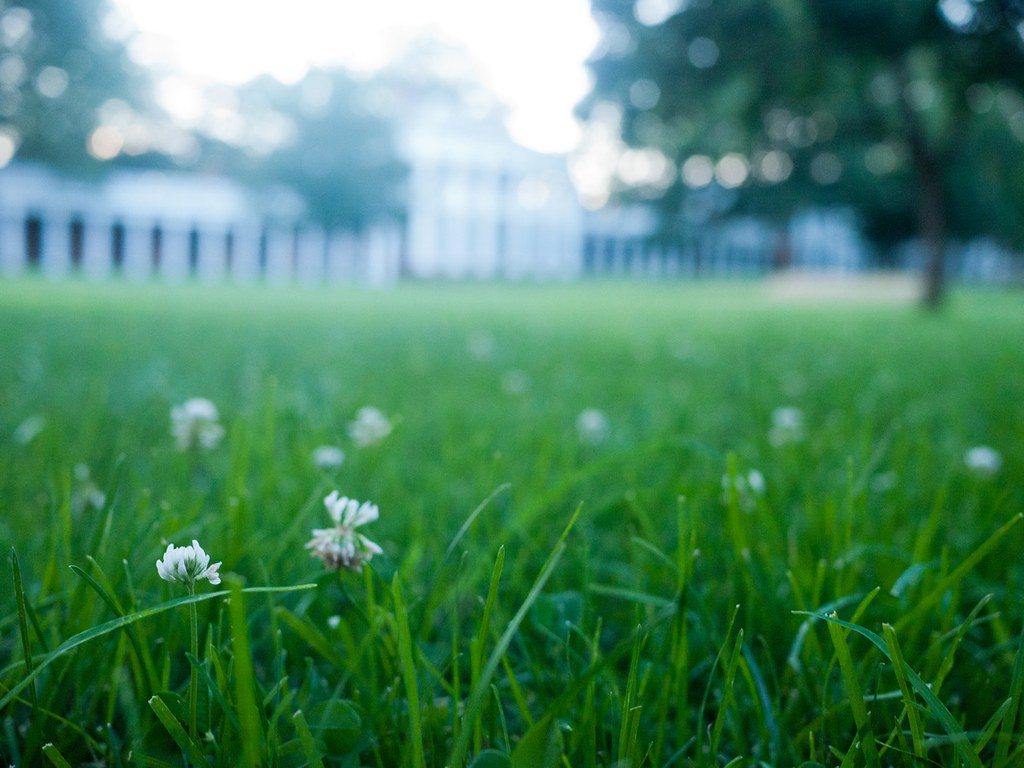 (Photo by
(Photo by